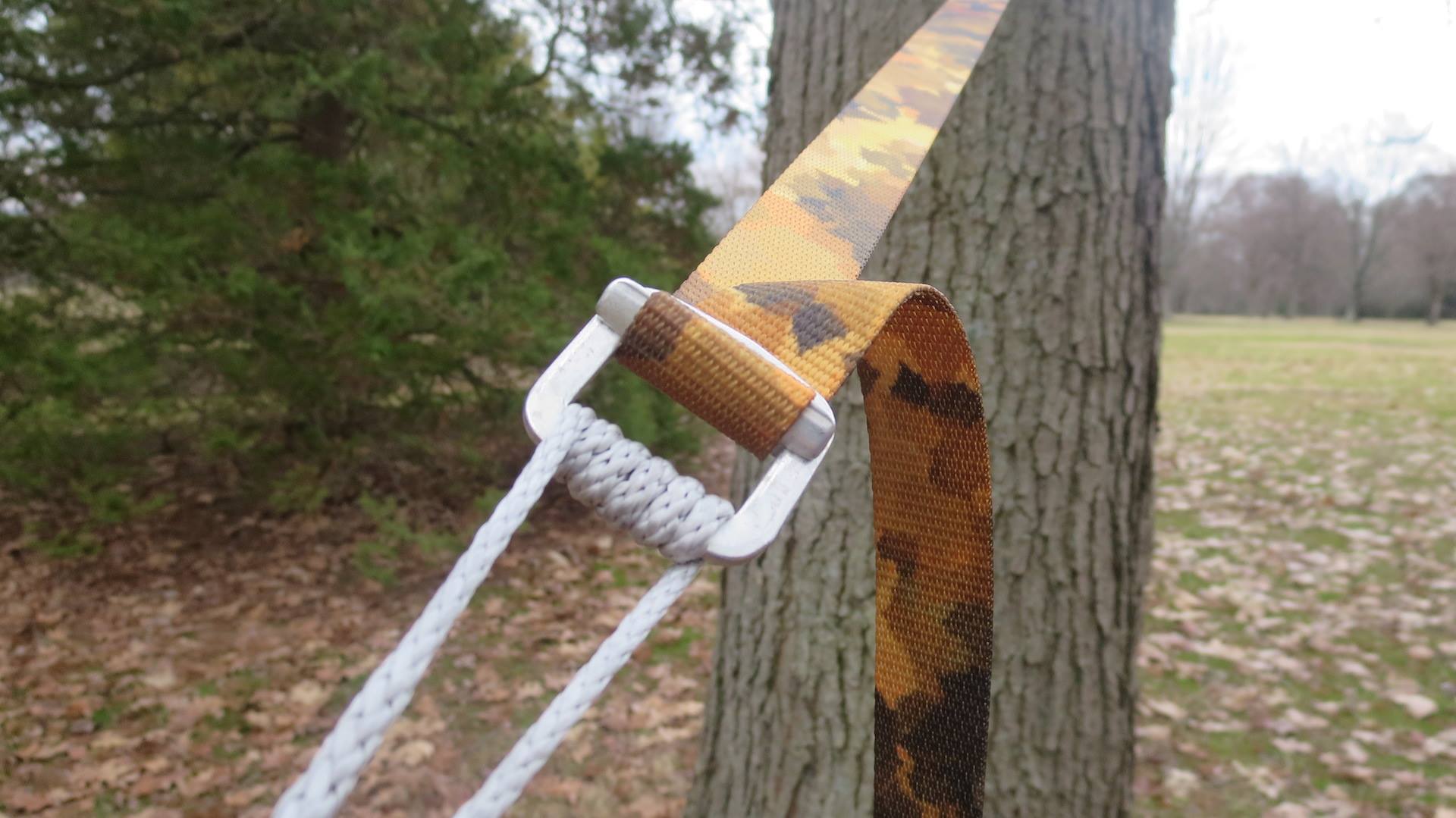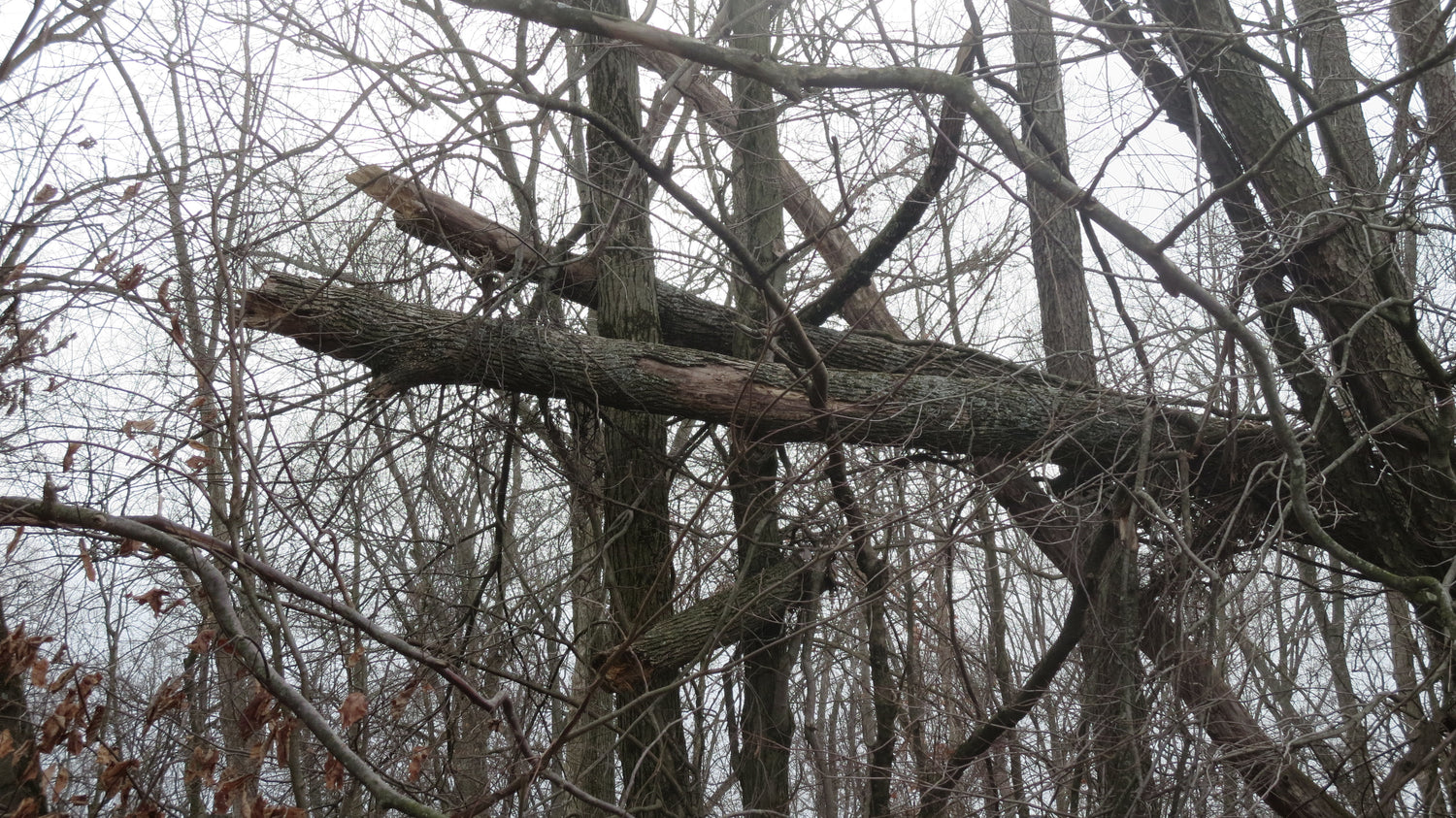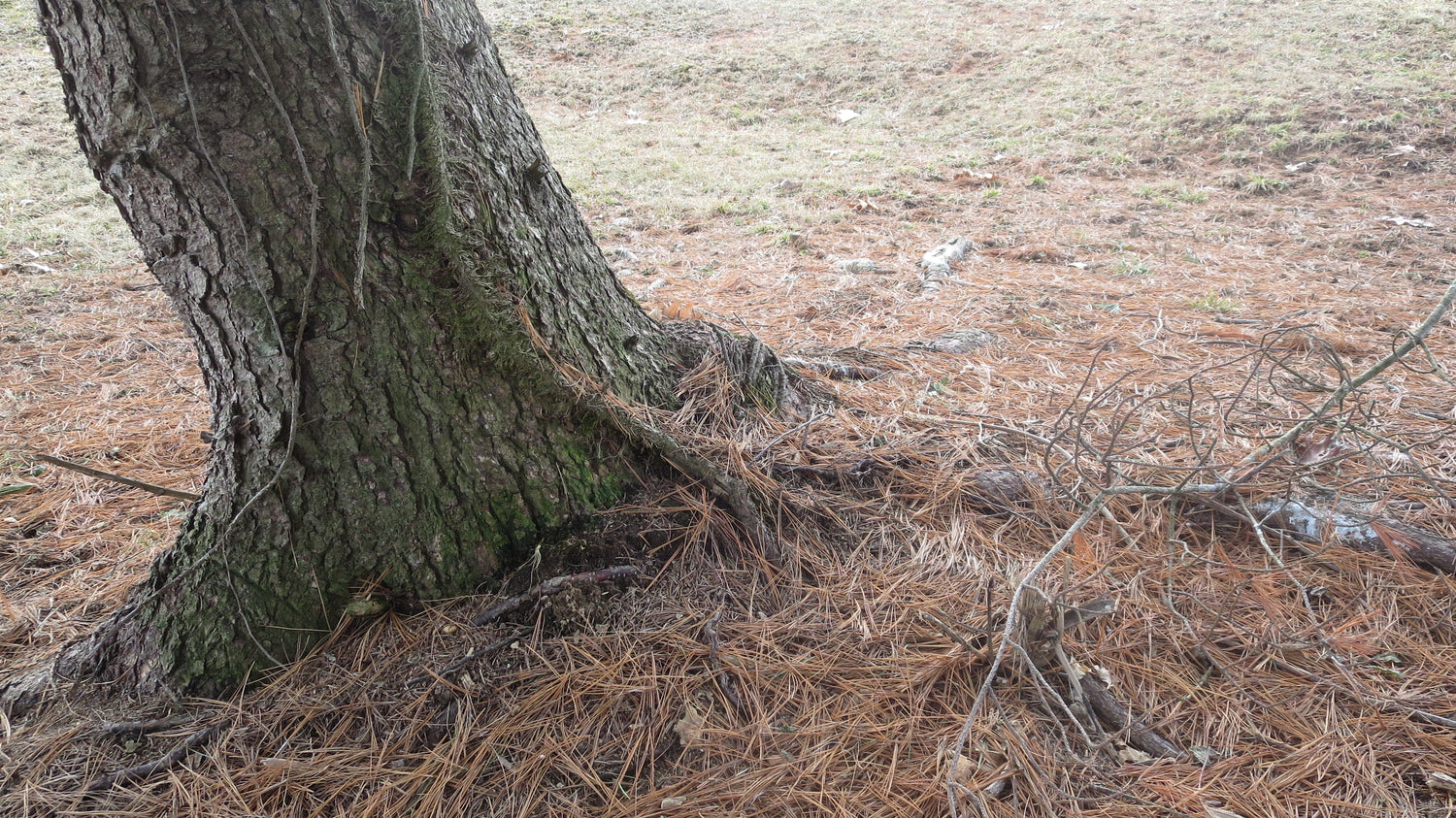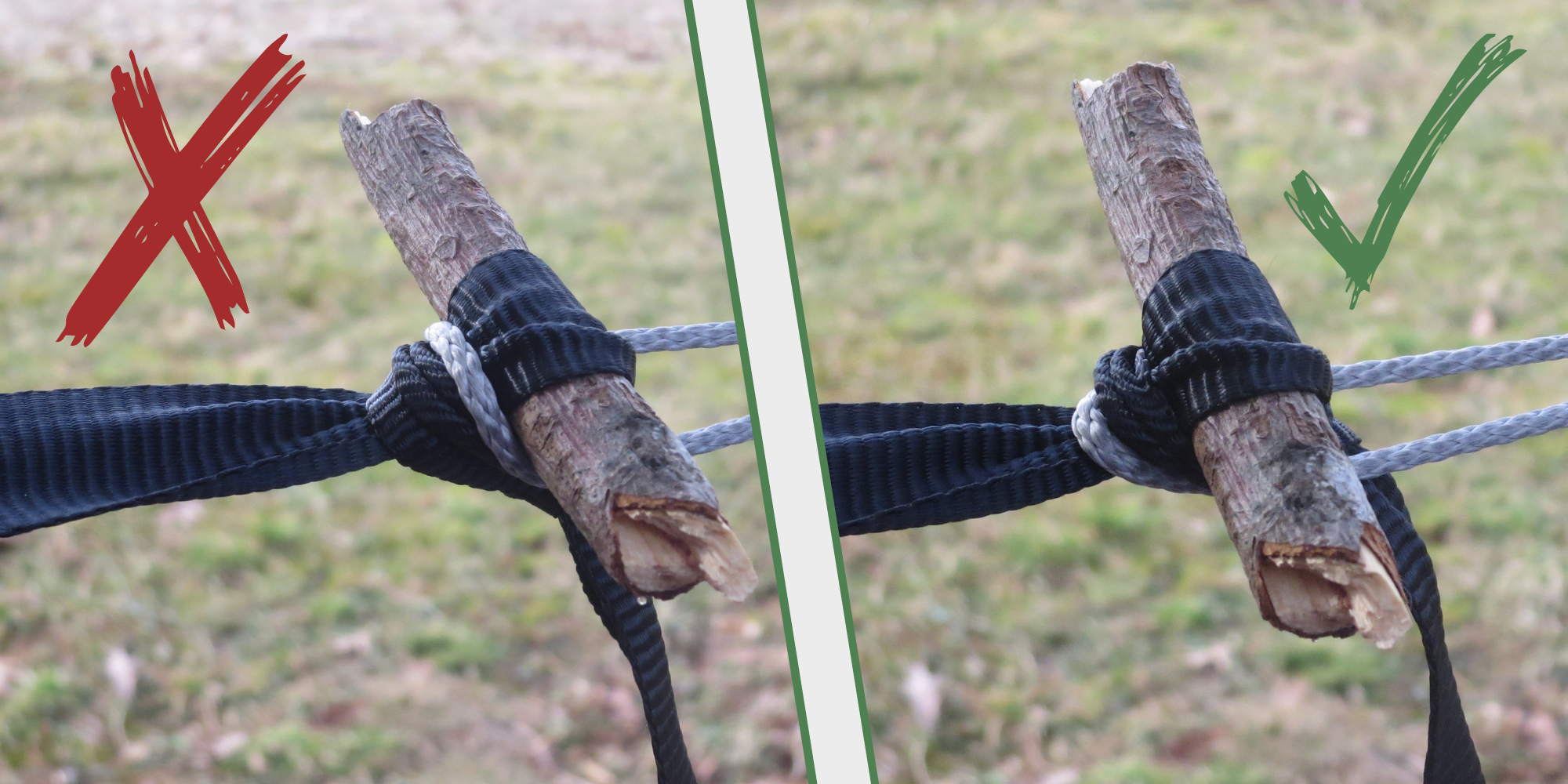
Hammock Safety
Hammock camping is not inherently dangerous, but there are some incredibly important principles you must always consider when hanging your hammock to ensure your safety.
Consider your Anchor Points
This is vitally important. If you take away one thing from this article, remember this: Only hang on a strong, solid anchor point. When you use a hammock, the force put on your anchor point is pulling directly towards you, so if they fail for any reason, they fall your direction.
Only use solid anchor points that are planted in solid ground (trees, telephone post, metal post, etc), and never things that are pieced together or stacked (brick structures). These structures hold downward pressure, but buckle under lateral force.
Diameter and Circumference
It's hard to give guidance on what a good anchor point is, since hanging from a weaker tree, like a poplar, is going to require a thicker trunk than a stronger species, like white oak. As a rule of thumb, if you can push on a tree and you see the branches above shake significantly, it's too weak to hang from.
Tree Health and Damage
Most often we hang hammocks from trees, so make sure the trees you choose are strong and healthy. If they have any evidence of rot, termites, weakness, or they shake when you push on them, It’s best to find a better tree.
Never hang from brick pillars
People have been seriously injured or killed from hanging their hammock from brick pillars. These structures are not made to support lateral force, and can buckle under the weight of a hammock.

Look Up
When choosing where to hang, look up. If you see dead limbs, beehives, bird nests, or anything else hanging in the trees, it's best to find another place to hang. You never know when that limb might fall, and you probably don't want to be under it when it does.

Look Down
In addition to looking up at the trees, look down at the terrain around you. Make sure there are no large rocks, briers, or anything else that may scuff or damage your hammock body. Also make sure the ground is clear of poison ivy, holes/burrows, or anything that you may trip on while getting in and out of your hammock.
Hammock Height
A hammock doesn’t perform any better hanging 10 feet in the air than it does 1 foot off the ground. As long as you can easily get in and out of the hammock, you don’t need to hang too high. As the old hammock adage goes:
"Never hang a hammock higher than you're willing to fall"

Hang on the knot, not the toggle!
Other Considerations
-
Don't choose a hammock that is too light
About our FabricsThe lighter the fabric, the weaker the hammock. We recommend that everybody keep the durability of their hammock in mind when selecting their fabric. When shaving weight off of your pack, your hammock's body fabric should be one of the last places you look to save an ounce.
-
Make sure your buckles don't slip
If you use our cinch buckle suspension, make sure they don't slip. Wet conditions and heavily worn straps can occasionally cause the buckles to slip very slowly. To ensure this doesn't happen, we recommend always tying a slippery hitch (or similar knot) with your strap after you're done adjusting your hammock.
-
Hang on the knot, not the toggle
If you use toggles for your suspension system, make sure you hang your hammock on the knot around the toggle, not the toggle itself. Toggles are not supposed to bear the weight of you and your hammock.
